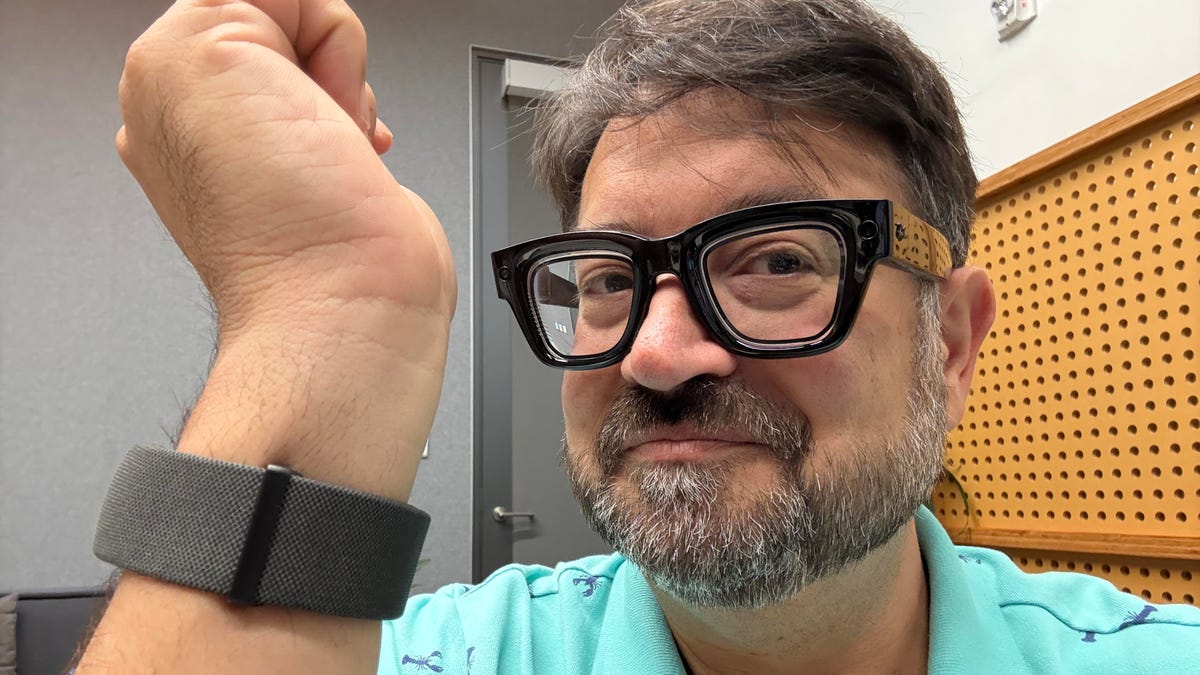Meta Unveils Ray‑Ban Display Glasses Paired with Neural Wristband

Key Points
- Meta launches $799 Ray‑Ban Display Glasses with a single‑eye 600 × 600 pixel LCOS display.
- Glasses feature transition lenses, a 20‑degree field of view, and up to six hours of mixed‑use battery life.
- A neural wristband reads subtle wrist‑muscle signals to enable pinch, swipe and twist gestures.
- Wristband battery lasts about 18 hours and is IPX7 water‑resistant.
- Devices connect via Bluetooth 5.3 and Wi‑Fi 6 and support limited prescription inserts (+4.00 to –4.00).
- Software focuses on Meta services: messaging, live captioning, navigation, AI assistance and limited third‑party integration.
- The system lacks eye‑tracking, 3D spatial awareness and a wide field of view, offering a modest AR experience.
- Available only in the United States now, with broader rollout planned for early 2026.
Meta introduced a new version of its Ray‑Ban smart glasses that feature a single‑eye color display, transition lenses, and a six‑hour mixed‑use battery. The glasses are sold for $799 and come with a neural wristband that reads subtle wrist‑muscle signals to enable pinch, swipe and twist gestures. The system runs on Bluetooth 5.3 and Wi‑Fi 6, supports limited prescription inserts, and offers Meta‑focused apps such as messaging, live captioning, navigation and AI‑driven assistance. While the hardware marks a tangible step toward everyday augmented‑reality wearables, its limited field of view, single‑eye display and modest app ecosystem suggest a work‑in‑progress.
Meta’s New Ray‑Ban Display Glasses
At its latest hardware showcase, Meta launched a premium version of its Ray‑Ban smart glasses. The glasses retain the iconic Ray‑Ban frame style but incorporate a liquid‑crystal‑on‑silicon (LCOS) projector that creates a color display visible only in the right eye. The display resolution is 600 × 600 pixels, offering roughly 42 pixels per degree across a 20‑degree field of view. Transition lenses are standard, allowing the display to remain visible outdoors while the lenses darken in bright light.
The glasses are priced at $799 and are slated to begin shipping on September 30. They are currently available only in the United States, with a broader rollout expected in early 2026. Battery life is advertised as up to six hours of mixed‑use operation, though heavy display usage may reduce that figure.
Neural Wristband Companion
Accompanying the glasses is a neural wristband that reads electrical signals from motor neurons in the wrist. The band can detect fore‑finger and middle‑finger pinches, thumb swipes, wrist turns and even a closed‑fist scrolling motion. These gestures let users navigate the glasses’ menus, answer calls, adjust volume, zoom photos and more without touching the device itself. The wristband’s battery lasts about 18 hours on a charge and carries an IPX7 water‑resistance rating.
Connectivity and Compatibility
The glasses connect to a paired smartphone via Bluetooth 5.3 and Wi‑Fi 6. They support a limited prescription range of +4.00 to –4.00 diopters, with optional prescription inserts supplied for demo purposes. No eye‑tracking or 3D spatial awareness is included; the system relies on the single‑eye display and the wristband for interaction.
Software Experience
Meta’s software ecosystem on the glasses focuses on its own platforms. Users can send and receive messages through WhatsApp and Messenger, view Instagram video links, and access live captioning that isolates voices in a crowd. Navigation is provided via a Maps app, and AI assistance can answer factual queries, generate images and suggest related content. The interface also includes a side touchpad and voice‑command support for basic functions.
While the glasses demonstrate functional augmented‑reality capabilities, the app selection remains heavily Meta‑centric, lacking integration with broader services such as email, notes or third‑party productivity tools. The limited field of view and single‑eye display create a “half‑there” experience that can feel odd in certain contexts.
Implications and Outlook
Meta’s Ray‑Ban Display Glasses represent a concrete step toward everyday wearable computing, blending a familiar eyewear form factor with emerging neural‑gesture technology. The product’s price, prescription limitations, modest battery life and narrow app ecosystem suggest it is an early iteration rather than a final solution. Industry observers note that the glasses’ success will depend on expanding developer support, improving display ergonomics and achieving tighter integration with the broader smartphone ecosystem.
Overall, the launch signals Meta’s continued investment in body‑augmented interfaces, positioning the company alongside other players revisiting the smart‑glasses market after the early‑2010s Google Glass era.